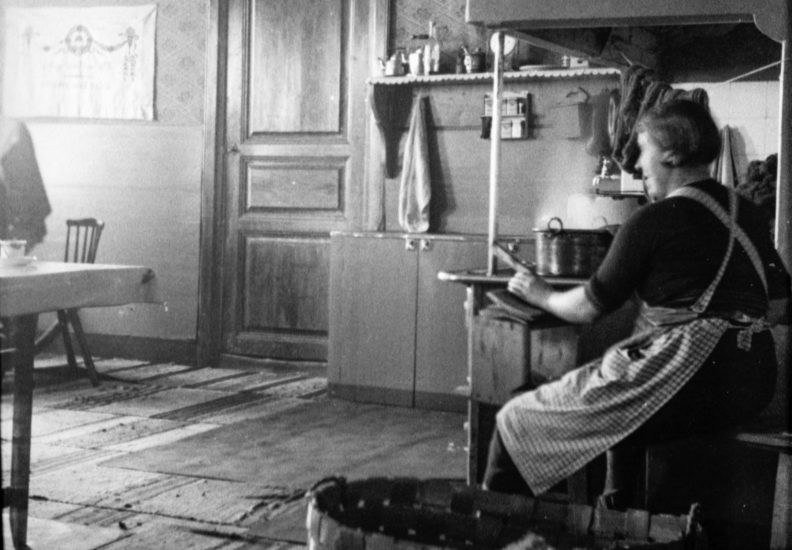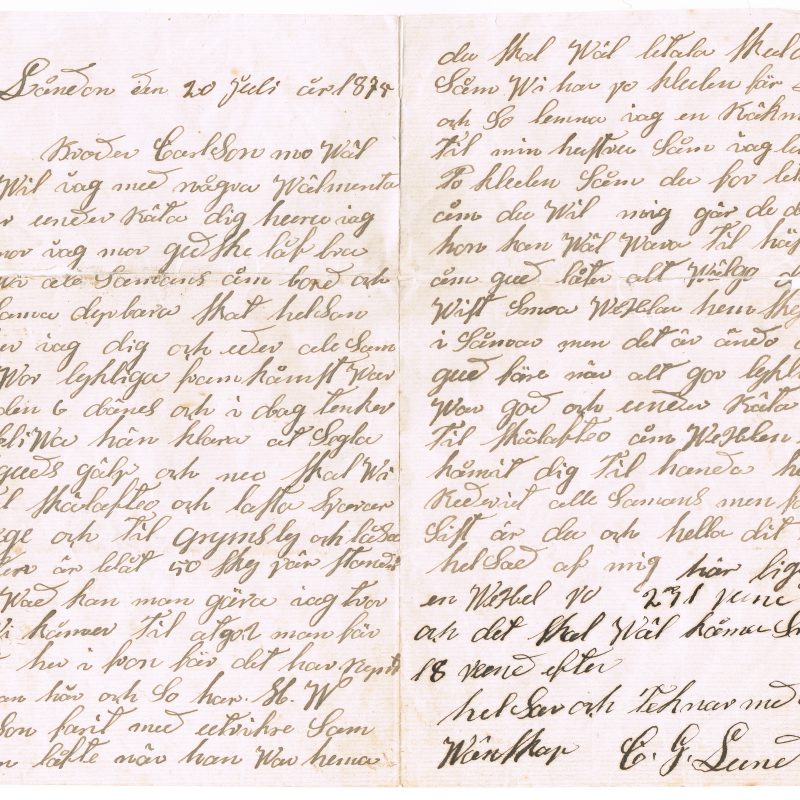Kitchen

Kitchen – The heart of the shipmaster’s homestead
The kitchen was, and still is, the big farm’s heart. It was used for cooking, baking, dining, being together, and working. The big dining table was a gateleg table – the kind Pellas has always had – and the people of Pellas gathered around it for all meals....
The kitchen has been slightly modernised for café use, and it still is a central place for baking, cooking, and socialising. Pellas’ hemvete bread, served at the café, is baked on the spot either in the wood-burning oven in the kitchen or in the baking hut. The big grey cupboard was here before the fire. On the ceiling in front of the cupboard, there is a bread pole where round bread with a hole in the centre was hung to dry. The kitchen couch, where one could rest for a moment or take a nap, was an important part of the kitchen’s interior. An open cupboard with fine porcelain dishes was a gift to Pellas. The floor is original, but the wood-burning oven and the kitchen cabinets arrived after the fire.
There, each at one end of the kitchen windows, where the snow-gleam enhanced the light, the two old ladies would sit spinning steadily, exchanging leisurely gossip that spanned Åland’s (but principally Lemland’s) affairs for many decades.
At improved intervals “Farmor” would rise, move the coffee kettle to the centre ring and insert a few billets under it. When Sven and I came in, resinous and rubicund, from the day’s timber work in the forest, the two of them would be at the table, sipping “på bit”, which is the only way to get the full flavour of the best Brazilian, and yet have it sweet. Put a hard top-grade sugar lump in your mouth and zip the coffee through that.
Pamela Eriksson in her book The Duchess: The Life and Death of the Herzogin Cecilie.

